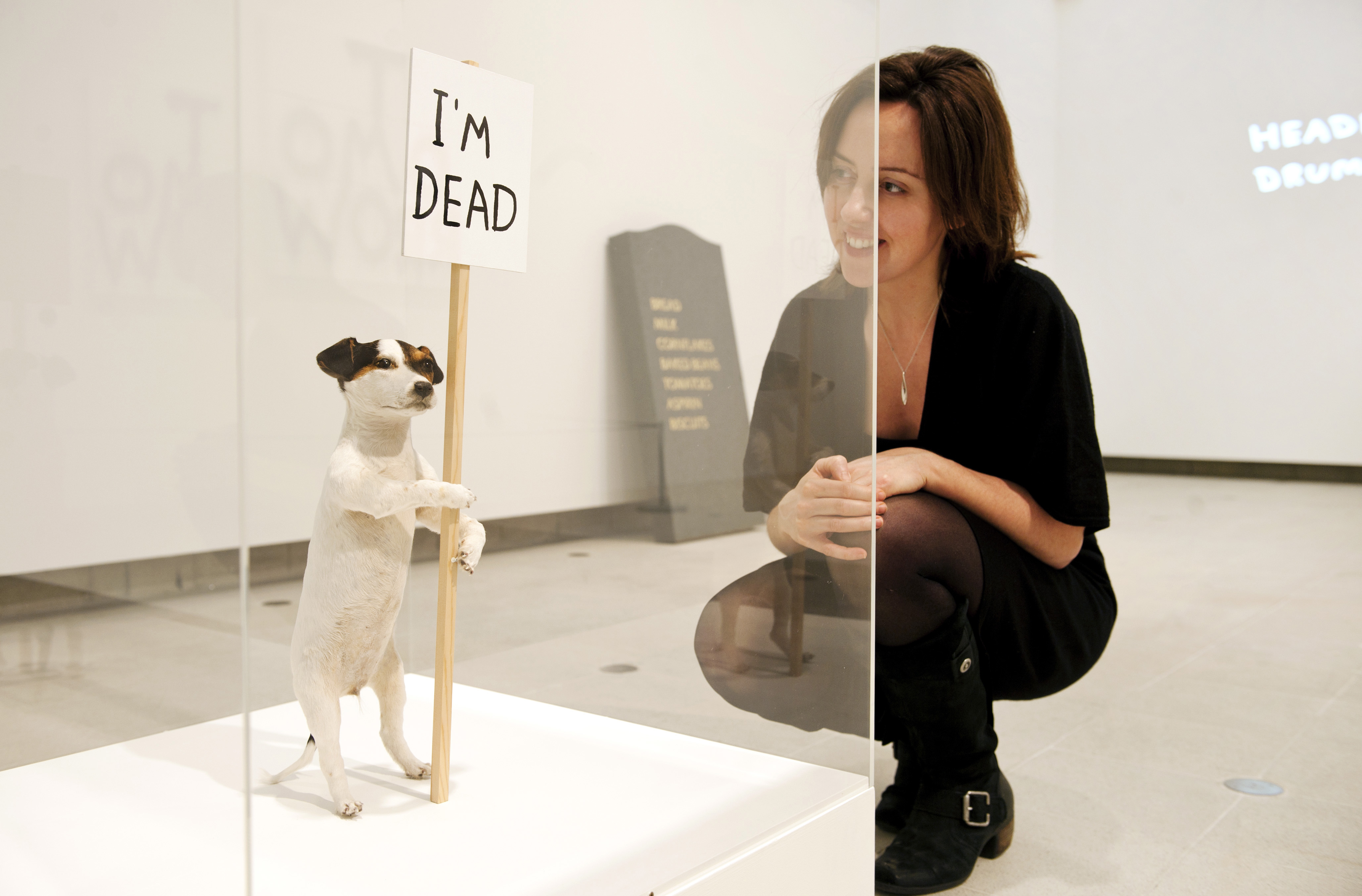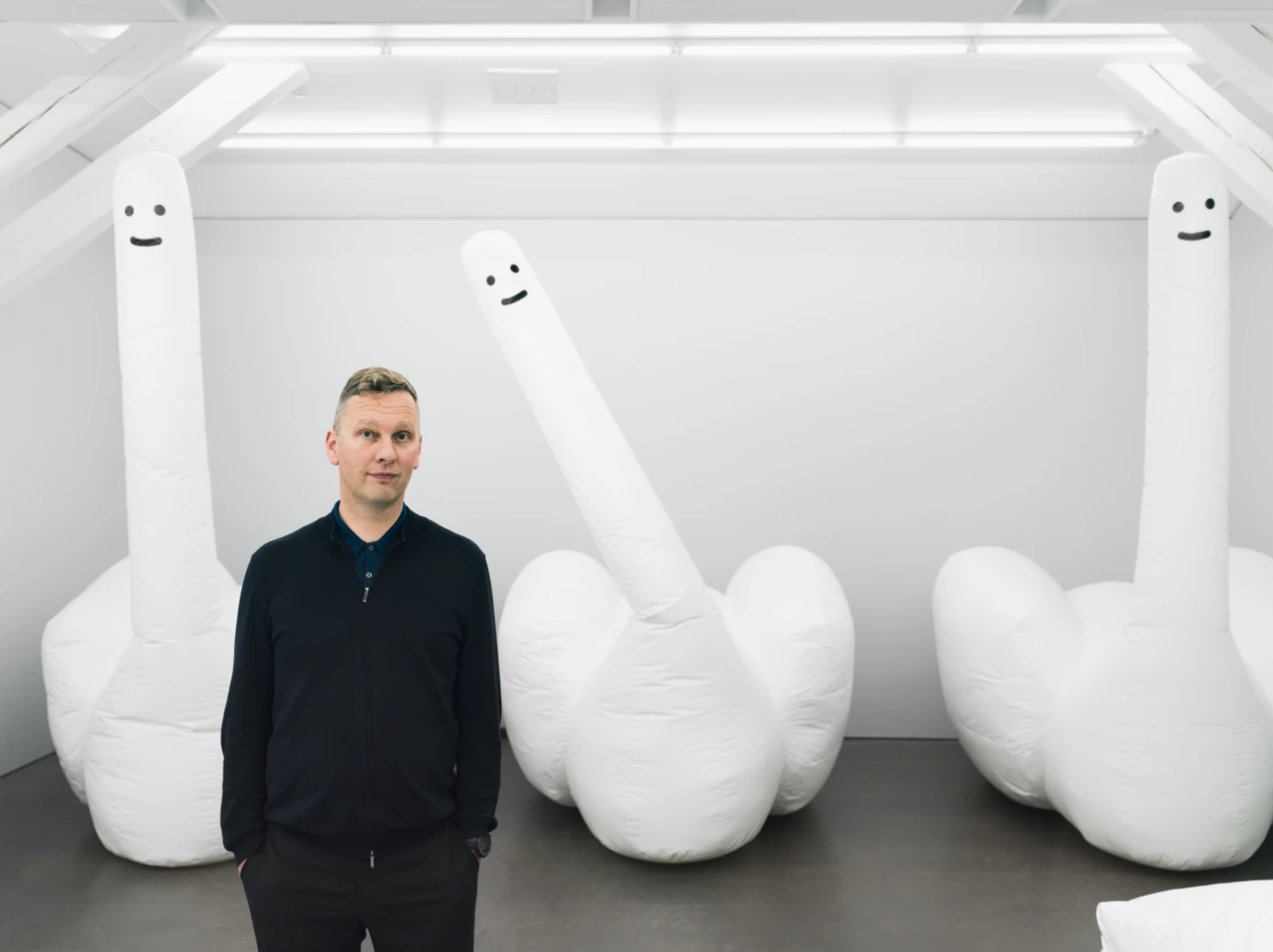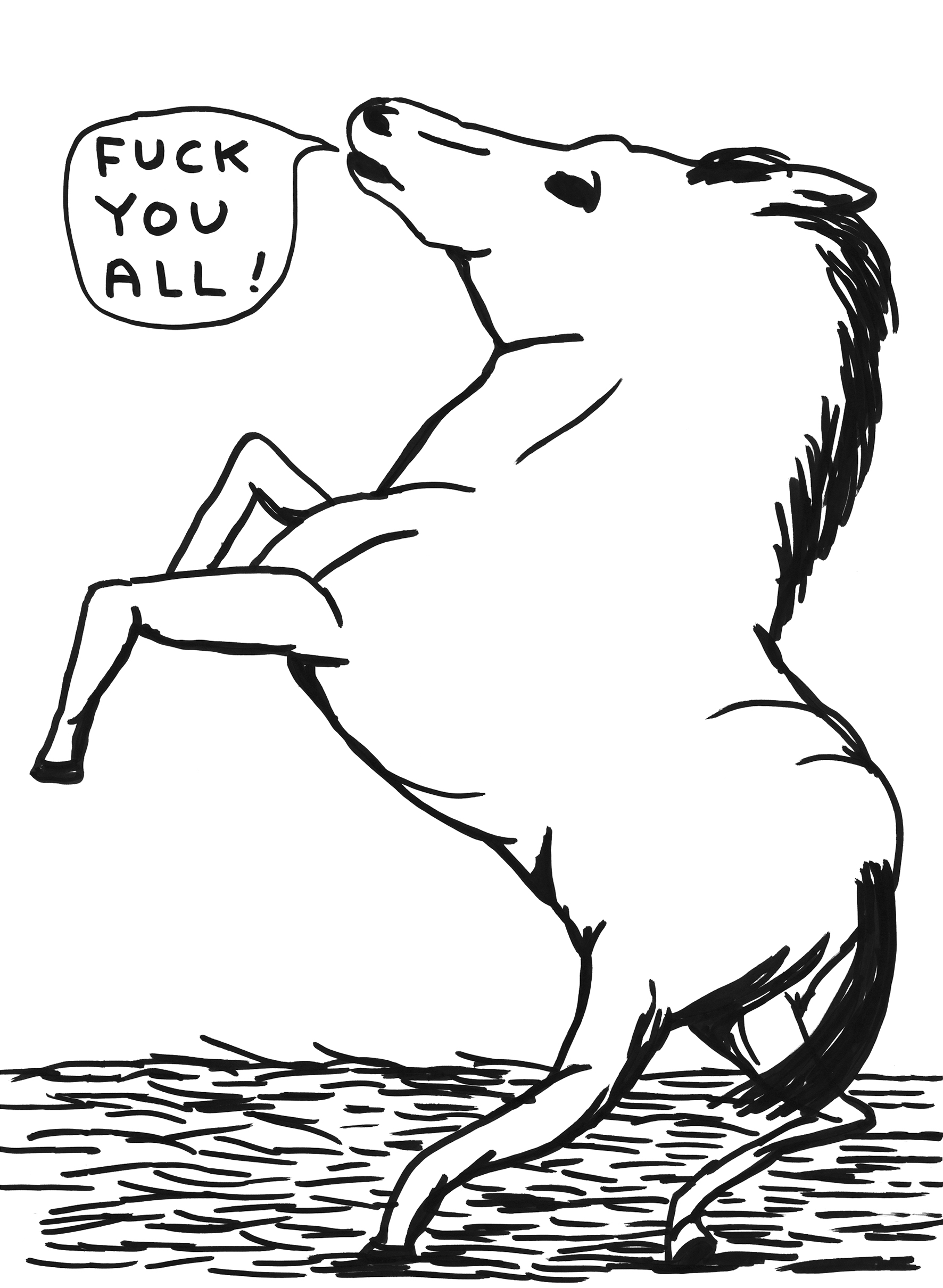
David Shrigley, I’m Dead, 2010 at Brain Activity exhibition at Hayward Gallery, Southbank Centre, 2012. Photo by Linda Nylind
A dead dog is a peculiar poster boy, but seemed a fitting one when it became the unofficial canine face of David Shrigley’s 2012 Hayward exhibition, Brain Activity. Standing on its hind legs—a sort of modern manifestation of Bulgakov’s Heart of a Dog protagonist—the dog has his head held high, bearing a placard reading “I’m Dead”. It’s bleak, smart and hilarious, a trilogy at the core of most of Shrigley’s output.
“Puppies and kittens are universal icons of cuteness: they’re fluffy, playful, bouncy; all full of life and vivacity and promise”
The wee Jack Russell version of I’m Dead (2010) is arguably the more famous of the artist’s “I’m Dead” critters: Shrigley also created a couple of cat versions (a white one from 2006, its black counterpart emerging four years later) in the same stance, as well as a fluffy terrier-like pup. The works aren’t the first time the artist has dabbled in taxidermy: 2001’s pun-tastic Squirrel without a Nut takes the form of a squirrel atop a log, carrying its own decapitated bonce; and this gruesome theme continues in 2006 with Cat without a Head, which is exactly as you’d expect from the title. Dead Hamster from 2008 shows the titular rodent prone in its brightly coloured cage, an emblem of that childhood moment in which either fast-acting parents make something up about it “moving to a farm” or knuckling down to explain the transience of life.
I’m Dead, then, is powerful in its conflation of innocence and experience. Puppies and kittens are universal icons of cuteness: they’re fluffy, playful, bouncy; all full of life and vivacity and promise. Clearly, in Shrigley’s versions they are no longer any of those things. They are, as spelled out in spidery monochrome handwriting, dead. Yet they have a life of sorts, immortalized in art, and form images that indelibly bury themselves in the viewers’ minds’ eye.
“The piece embodies a stoic, and very British humour. It doesn’t beat about the bush about what’s really happened here”

The piece embodies a stoic, and very British humour. It doesn’t beat about the bush about what’s really happened here. The dog isn’t having a rest, he’s having the longest sleep of all of them, and he’s not afraid to say so. Its stiff little body is like the British stiff upper lip—the “you gotta laugh, ain’t ya?” old-school attitude that underpins much of Shrigley’s darkly humorous pieces from his
simple drawings (“Fuck you all!” roars an otherwise rather majestic horse) to his Giant Inflatable Swan-Things, which swell into smiling (and charmingly phallic) forms for four minutes, before slowly deflating for another eight minutes into sadder, crumpled versions of their former selves, rising and inevitably falling ad infinitum.

For all its wry playfulness, Shrigley’s work is so brilliant because of its rigorous engagement with what it means to be alive; to be a real, flawed human being in a world that so often feels at worst brutal, and at best, a bit unfair. “I know a lot of people still don’t see my work as serious, because it’s funny,” Shrigley told David Eggers in Time Out. “But then again, I’ve come to realise that the opposite of seriousness is not humour. The opposite of seriousness is incompetence. It’s somebody who isn’t really engaged with what they’re doing. And the opposite of humour is maybe sadness.”
What I’m Dead does is tell us, in a strange sort of way, that it’s all going to be ok. Death happens, says the proud little dog. Life is strange, and absurd. Death is inevitable. Death is ok.





